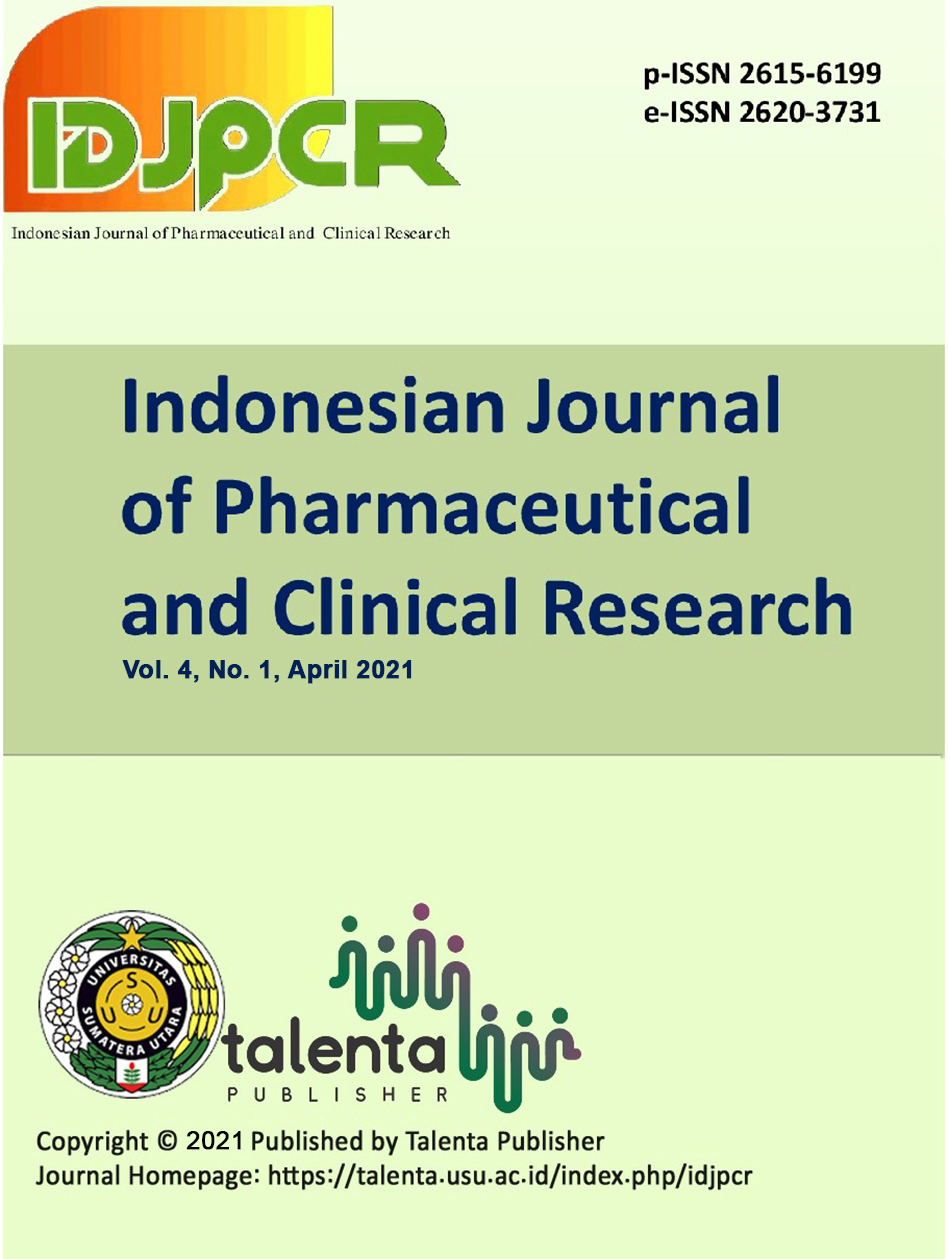The Effectiveness Of Angiotensin Receptor Neprilysin Inhibitor On Improving The Cardiac Remodelling Compared To Ace-Inhibitor On Patients With Chronic Heart Failure
DOI:
https://doi.org/10.32734/idjpcr.v4i1.5352Keywords:
ACEI, ARNI, Effectiveness, Heart FailureAbstract
Heart failure is one of the major cause of patient’s admittance to the hospital. Primary hypertension is one of the most universal comorbidities that precedes heart failure and is one of the more common risk factors held by the majority of the population. Right now, antihypertension that are generally used is from Angiotensin-Converting Enzyme Inhibitor (ACE-I) and Angiotensin Receptor Blocker (ARB). A new group of an antihypertensive agent called “Angiotensin Receptor Neprilysin Inhibitor (ARNI)†to further improve the patient condition. This study aims to evaluate the effectivity of ARNI against ACE-I regarding its cardiac reverse remodeling effect. Search strategy was done using electronic databases, which are Pubmed, Scopus, and Cochrane. Articles included are therapeutic study that is in line with the clinical question and fulfills the inclusion and exclusion criteria. Critical appraisal was done by assessing the article’s validity, importance, and applicability according to Oxford Center of Evidence-Based Medicine 2011 to two chosen articles. 2 articles are chosen and appraised. Both of the study are shown to be valid and shows that ARNI has a significantly better result on improving cardiac reverse remodeling via the left ventricle ejection fraction compared to ACE-I. However, the applicability of ARNI is still debatable in Indonesia as it was not covered by national insurance and there is no generic form. ARNI shows to be significantly better to reverse cardiac remodeling compared to ACE-I, but its applicability has to be improved to be implemented in Indonesia.
Downloads
References
H. T. F. G. Bui AL, “Epidemiology and risk profile of heart failure,†Nature Reviews Cardiology, vol. 8, no. 1, p. 30, 2011 Jan.
V. T, “Years lived with disability (YLDs) for 1160 sequelae of 289 diseases and injuries 1990–2010: a systematic analysis for the Global Burden of Disease Study 2010,†The lancet, vol. 380, no. 9859, pp. 2163-2196., 2012.
M. D, “Heart disease and stroke statistics—2016 update: a report from the American Heart Association,†Circulation, vol. 133, no. 4, pp. e38-60, 2016.
F. G. Ziaeian B, “Epidemiology and aetiology of heart failure,†Nature Reviews Cardiology, vol. 13, no. 6, p. 368, 2016.
Badan Penelitian dan Pengembangan Kesehatan Kementerian Kesehatan RI, Jakarta: Riset Kesehatan Dasar, 2018.
G. J. H. B. Neubauer BE, “Heart Failure: Optimizing Recognition and Management in Outpatient Settings,†Prim Care Clin Off Pract, vol. 45, no. 1, p. 63–79, 2018.
W. H. M. J. Jorsal A, “Heart Failure: Epidemiology, Pathophysiology, and Management of Heart Failure in Diabetes Mellitus,†Endocrinol Metab Clin North Am, vol. 47, no. 1, p. 117–35, 2018.
G. A. Malek V, “Neprilysin inhibitors: A new hope to halt the diabetic cardiovascular and renal complications?,†Biomed Pharmacother, vol. 90, p. 7529, 2017.
P. M. D. R. P. J. Dargad RR, “Sacubitril/valsartan: A novel angiotensin receptor-neprilysin inhibitor,†Indian Heart J, vol. 172, pp. 82-95, 2018.
Z. R. L. C. C. Q. X. T. L. D. Wang Y, “Effects of the Angiotensin-Receptor Neprilysin Inhibitor on Cardiac Reverse Remodeling: Meta-Analysis,†J Am Heart Assoc, vol. 8, no. 13, p. e012272, 2019.
D. D. C. C. R. M. M. D. L. G. C. R. A. J. Gonzales-Torres L, “Angiotensin-neprilysin inhibition further reverses cardiac remodeling as compared to angiotensin inhibition in reduced heart failure patients,†Clinical Cardiology Journal Volume II, vol. 2, 2018.
Downloads
Published
How to Cite
Issue
Section
License
Copyright (c) 2021 Indonesian Journal of Pharmaceutical and Clinical Research

This work is licensed under a Creative Commons Attribution-ShareAlike 4.0 International License.
The Authors submitting a manuscript do so on the understanding that if accepted for publication, copyright of the article shall be assigned to Indonesian Journal of Pharmaceutical and Clinical Research (IDJPCR) and Faculty of Pharmacy as well as TALENTA Publisher Universitas Sumatera Utara as publisher of the journal.
Copyright encompasses exclusive rights to reproduce and deliver the article in all form and media. The reproduction of any part of this journal, its storage in databases and its transmission by any form or media, will be allowed only with a written permission from Indonesian Journal of Pharmaceutical and Clinical Research (IDJPCR).
The Copyright Transfer Form can be downloaded here.
The copyright form should be signed originally and sent to the Editorial Office in the form of original mail or scanned document.









